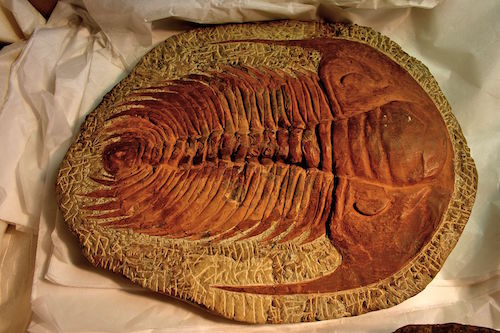 Evolution
Evolution
Irony Alert: Michael Shermer on “When Facts Fail”

When an evolutionist, such as Michael Shermer in this case, warns readers that people don’t change their minds even when presented with the facts, the irony should be savored. Shermer writes in Scientific American (“How to Convince Someone When Facts Fail“).
Have you ever noticed that when you present people with facts that are contrary to their deepest held beliefs they always change their minds? Me neither. In fact, people seem to double down on their beliefs in the teeth of overwhelming evidence against them. The reason is related to the worldview perceived to be under threat by the conflicting data. [Emphasis added.]
Yes, there certainly are conflicting data. It gets worse:
Creationists, for example, dispute the evidence for evolution in fossils and DNA because they are concerned about secular forces encroaching on religious faith.
Evidence for evolution in DNA? What exactly would that be? Ultra-conserved elements, orphans, replication, duplication, the universal DNA code, protein synthesis, protein coding genes, genetic regulation, recurrent evolution, convergence, cascades of convergence, and…well you get the idea. This evolutionist is demonstrating some of those “facts that fail” and the attendant doubling down, right before our eyes.
And what about those fossils? More “evidence for evolution”? How about those fossils that appear “as though they were planted there,” as Richard Dawkins once admitted. One of those “planted” classes, the humble trilobites, had eyes that were perhaps the most complex ever produced by nature.1 One expert called them “an all-time feat of function optimization.”
And even Shermer’s go-to source, Wikipedia, admits ancestral forms, err, “do not seem to exist”:
Early trilobites show all the features of the trilobite group as a whole; transitional or ancestral forms showing or combining the features of trilobites with other groups (e.g. early arthropods) do not seem to exist.
Likewise, even the evolutionist Niles Eldredge admitted2 they didn’t make sense in light of standard evolutionary theory:
If this theory were correct, then I should have found evidence of this smooth progression in the vast numbers of Bolivian fossil trilobites I studied. I should have found species gradually changing through time, with smoothly intermediate forms connecting descendant species to their ancestors.
Instead I found most of the various kinds, including some unique and advanced ones, present in the earliest known fossil beds. Species persisted for long periods of time without change. When they were replaced by similar, related (presumably descendant) species, I saw no gradual change in the older species that would have allowed me to predict the anatomical features of its younger relative.
And it just gets worse:
The story of anatomical change through time that I read in the Devonian trilobites of Gondwana is similar to the picture emerging elsewhere in the fossil record: long periods of little or no change, followed by the appearance of anatomically modified descendants, usually with no smoothly intergradational forms in evidence.
Any more facts, Michael Shermer?
Notes:
(1) Lisa J. Shawver, “Trilobite Eyes: An Impressive Feat of Early Evolution,” Science News, p. 72, Vol. 105, February 2, 1974.
(2) Niles Eldridge, “An Extravagance of Species,” Natural History, p. 50, Vol. 89, No. 7, The American Museum of Natural History, 1980.
Photo: A trilobite, by Mike Peel [CC BY-SA 2.0 uk], via Wikimedia Commons.
Cross-posted at Darwin’s God.
